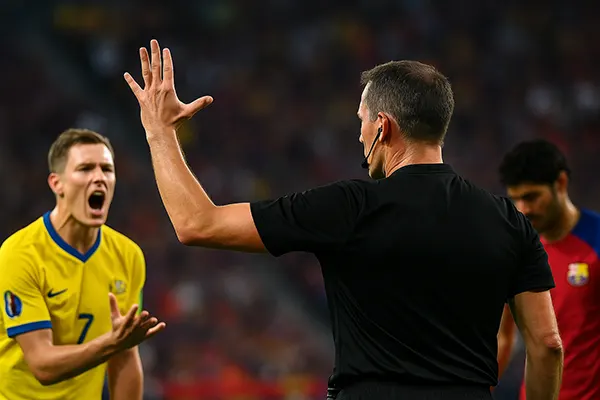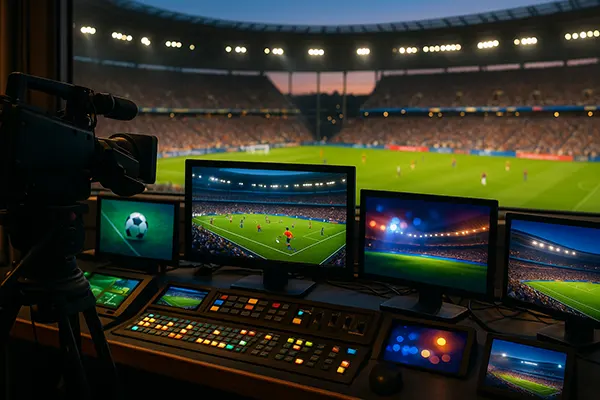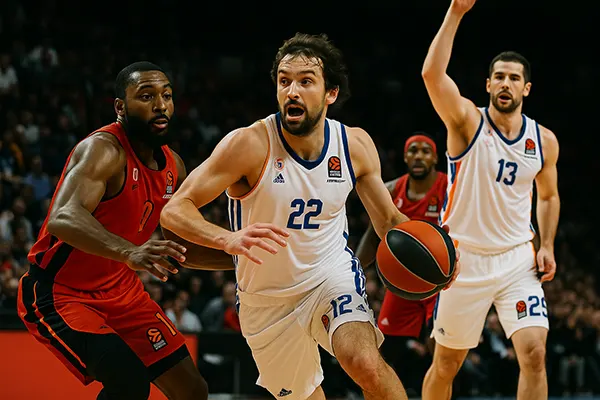VAR in 2025: New Features, Criticism, and Impact on Game Dynamics

Since its introduction, the Video Assistant Referee (VAR) system has transformed football by adding a layer of technological review to contentious decisions. In 2025, VAR has undergone notable updates, generating both praise and scrutiny across footballing circles. This article explores the latest technical enhancements, examines public and expert criticism, and evaluates VAR’s influence on how football is played today.
Technological Improvements in VAR for 2025
The VAR system in 2025 features several upgrades aimed at improving precision and efficiency. One key addition is semi-automated offside detection with real-time 3D mapping, which provides instantaneous alerts to referees without the need for manual line drawing. This speeds up decision-making and reduces match interruptions.
Another advancement includes the integration of AI-powered ball-tracking technology. This system analyses ball trajectory, spin, and contact points, significantly enhancing foul and handball assessments. These improvements reduce subjectivity, which has been a major concern since VAR’s inception.
In addition, communication between VAR officials and on-pitch referees has been streamlined via encrypted audio systems. The system now supports immediate feedback loops, helping referees make clearer, faster decisions while maintaining transparency for broadcast purposes.
Global Implementation and Standardisation
FIFA has mandated uniform VAR protocols across all top-tier competitions, including major continental leagues and tournaments. This effort seeks to minimise discrepancies in decision criteria, which previously led to confusion among players and supporters.
Training for referees now includes VR-based simulations of match scenarios. These modules offer lifelike replays and time-pressured decision-making environments, ensuring officials are equipped to handle real-time demands of elite matches.
Moreover, VAR centres are now equipped with multi-angle 8K cameras for critical match zones. These upgrades aim to ensure every key incident is reviewed with the highest visual clarity available in sport broadcasting.
Persistent Criticism and Ethical Concerns
Despite improvements, VAR continues to face significant criticism. Many argue it interrupts the natural rhythm of the game. While decision time has improved in 2025, stoppages still affect momentum and spectator experience, especially during high-stakes moments.
Concerns around consistency remain. VAR officials, though highly trained, may still interpret situations differently across matches. This lack of uniformity can undermine the system’s credibility, as fans expect fairness across all fixtures.
Ethical concerns also arise regarding the AI algorithms used. Transparency over how these systems are trained and what biases may exist is still limited. Football bodies have yet to publish detailed technical reports or audits, leading to scepticism from data experts and fans alike.
Public Sentiment and Media Backlash
Football supporters in 2025 remain divided over VAR. Some appreciate its role in correcting obvious mistakes, while others lament the loss of emotional spontaneity in goal celebrations and key match events.
Media outlets frequently highlight VAR incidents, creating narratives that can overshadow the actual football. A single controversial VAR decision often dominates post-match discussions, especially in global tournaments or high-profile derbies.
Player reactions have become more restrained due to VAR reviews. Celebrations are often muted until confirmation, affecting the spectacle and emotion that define football as a cultural phenomenon.

Impact on Tactical Approaches and Game Dynamics
Teams in 2025 adapt their strategies to align with VAR’s presence. Defenders are more cautious in the penalty area, aware that minor infractions can be spotted by multi-angle replays and result in penalties. This has led to a decline in aggressive tackles and shirt pulling.
Attackers exploit VAR’s precision by drawing attention to minimal contact, hoping to initiate reviews. Coaches now train forwards to engage defenders in situations that could trigger VAR checks, influencing how offensive play is structured.
Goalkeepers, too, have adjusted. Movement off the line during penalties is closely monitored, and encroachments are swiftly penalised. Training now includes awareness of VAR-observable rules, fostering a new discipline among players across all positions.
Long-Term Effects on Football Integrity
VAR’s impact reaches beyond tactics. It has redefined what is perceived as fair play, shifting focus from referee discretion to technological validation. Some purists argue this detracts from the human element of sport, while others welcome the reduction in blatant refereeing errors.
Governing bodies continue to assess VAR’s influence through statistical reviews and fan surveys. Initial data from UEFA and FIFA in early 2025 suggest a reduction in critical refereeing mistakes, but also an increase in match duration by an average of 3.2 minutes.
Looking forward, the challenge lies in balancing the benefits of precision with the soul of the game. VAR is no longer a novelty; it is an evolving part of football’s fabric that will shape how generations experience the sport.





